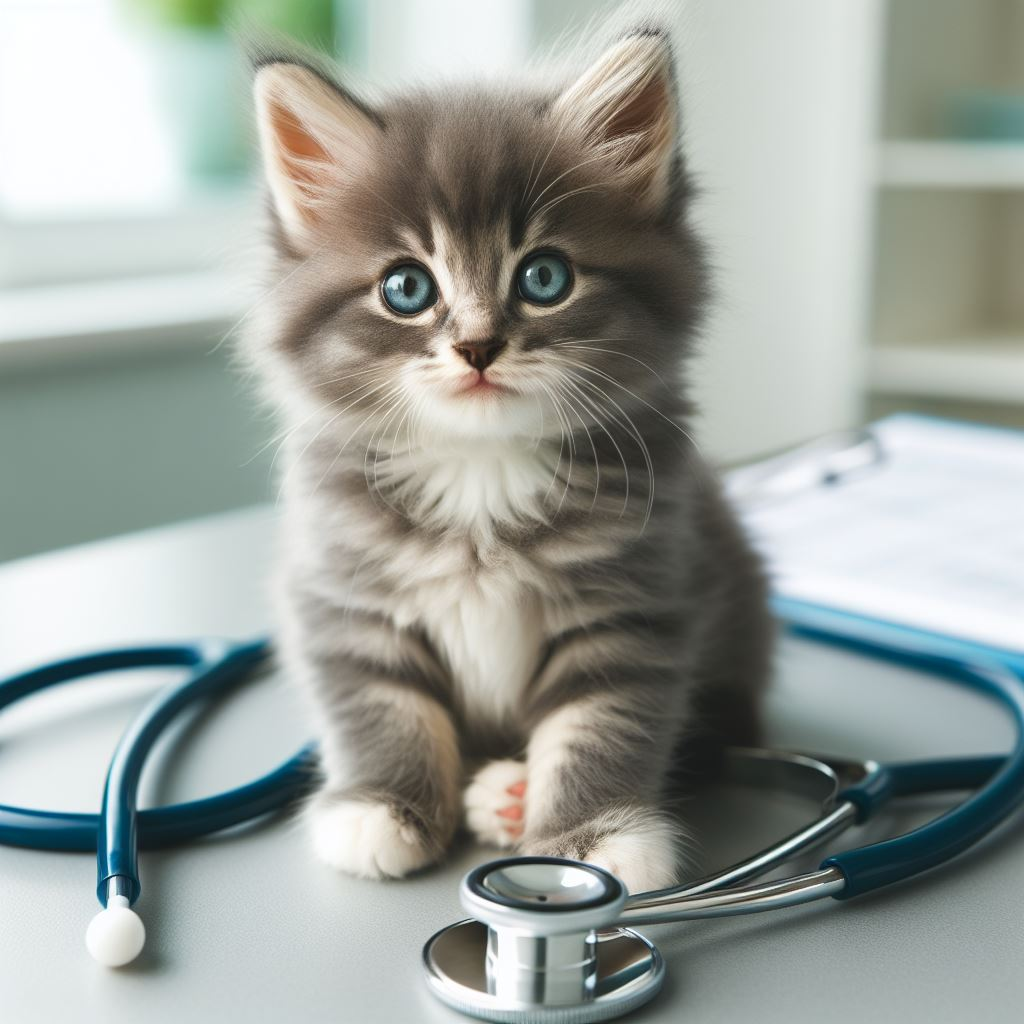
How to Tell How Old Kittens Are?
Oh, those innocent little eyes. Those sweet, fluffy paws. That purr that melts your heart. Kittens tug at our heartstrings something fierce. When that wide-eyed furball comes into your home, excitement bubbles over. But amidst all the snuggles and playtime, questions creep up, too. How old is my kitty? What does she need right now? Am I caring for her, right?
No worries, friend. We’ve got you covered. Understanding your kitten’s stage of growth is key to giving her everything she needs to stay happy and healthy. Let’s walk through it together, from helpless newborn to romping juvenile, so you can give her the best care possible.
Newborn Kittens: Blind, Deaf, and Utterly Helpless
Just hatched and eyes sealed shut, newborn kittens rely fully on their mama cat. They’re deaf, blind, and unable to control their body temperature, so keeping them warm is priority number one. A heating pad set on low under a blanket works wonders. Handle them gently; everything is brand new for these tiny furballs!
By day five, their little umbilical cord stump dries up and falls off. Their eyes start peeking open around day seven, revealing cloudy blue peepers taking in their strange new world. They remain deaf but soon begin making the sweetest little squeaks and calls for Mama.
Two Weeks Old: Wobbly Steps into the World
At the two week mark, eyes open fully, revealing stunning baby blues. Their vision is still fuzzy, but now they can take in colors, shapes, and motions. Ears start unfolding too, bringing muffled sounds into focus. Kittens teeter around on shaky legs, exploring their nest on timid paws.
Make sure they stay nice and cozy since they still can’t control body temperature. Aim for around 80 degrees—Mama Cat knows best when it comes to keeping her babes warm and snuggly.
Three Weeks Old: Discovering New Textures and Toys
By three weeks, ears stand straight up, taking in every little sound with bright-eyed wonder. They begin walking more steadily on sturdy legs. This confidence brings curiosity—what’s all this stuff surrounding their nest?
Tiny teeth start breaking through tender gums. You’ll see them testing out nibbles on toys and bedding as they play and tussle with littermates. Lower the ambient temperature to around 75 degrees since they can now regulate warmth a bit better.
One Month Old: Exploring the Big Wide World
At four weeks, your kitten navigates better on steady legs, scampering after toys and pouncing on siblings. More teeth push through, giving them quite the nibble!
Kittens interact more, too. You’ll see them seek affection, rub against you, chase your laces. It’s prime time for socialization, so give them plenty of gentle handling and stimulation through play. Keep up supplemental heat since they still need help staying warm and cozy.
Around week five, back teeth cut through their gums—no more just gumming their chow! Wet food provides important nutrients for development, so try mixing it into their regular milk-based diet. Ensure healthy growth by tracking weight at each feeding.
Six Weeks: Grooming, Potty Training, and Play Galore!
Look at those needle-sharp milk teeth! By six weeks, your kitten sports a full set, ready to nibble anything and everything. You’ll see them mimic mama cat’s grooming routine, licking their fluffy coat and cleaning hard-to-reach spots for littermates.
Bladder and bowel control improves, so start showing your kitten where the litter box lives. Praise every attempt! Proper elimination habits now prevent messy cleanups later. It’s also time for their first round of vaccinations to protect your tiny one’s immune system.
Kittens love to play, play, play! Make sure your energetic buddy gets plenty of stimulation and affection during long, Wakeful hours full of chaos and cuteness.
On the Road to Adulthood: Almost Ready for Their New Home
At seven weeks, eyes start shifting from blue toward their permanent adult shade. By eight weeks, your kitten forms close bonds with their people, ready to venture into their forever home full of snuggles and playtime.
This is an optimal window for spay/neuter surgery before sexual maturity kicks in. Shelters and rescues won’t adopt unfixed kittens, so talk with your vet about the right timing for this important procedure.
Caring For Your Growing Kitten: Key Tips
- Handle newborns carefully and keep them warm.
- Weigh kittens regularly to ensure healthy growth.
- Provide affection, stimulation, and socialization daily.
- Introduce solid food around 4-5 weeks alongside formula.
- Begin potty training and grooming habits early.
The first three months set the foundation for your kitten’s future health and behavior. Support healthy development with proper nutrition, enriching playtime, vet checkups, and lots of love!
Two to Three Months: High Energy and Constant Play
Your kitten transforms more and more into a juvenile cat as nine weeks approach. With adult teeth cutting through, full weaning completed, and energy to spare, they eat solid food easily now and play hard between frequent snoozes.
Curious kittens yearn to explore new environments. Make sure your home is properly kitten-proofed so they don’t get into mischief with all that boundless energy! Provide interactive toys to spark their interest and plenty of vertical spaces to climb.
By three months old, your kitten’s rapid growth stage starts slowing down. Make sure you keep up those vet visits for continued vaccinations on schedule. Healthy development now means an active, happy cat for years to come!
Choosing the Purr-fect Adoption Age
Eager as you may be to take home that snuggly furball, patience pays off! Kittens adopted too early often suffer behavior and health issues down the road. Why? They miss out on vital one-on-one time with Mama, learning feline social skills.
Kittens nurtured by mom in the past twelve weeks handle stress better, play nicer with other pets, and avoid inappropriate elimination. Building robust immune systems takes time too. When adopting, ask the shelter about your kitten’s background to ensure they get the best start possible.
Prioritizing Preventative Vet Visits

Regular checkups safeguard your kitten’s health every step of the way. Exams start right after birth and continue through adulthood. For kittens, vaccinations begin between six and eight weeks, with boosters every three to four weeks until four months old.
Don’t skip well visits! Your vet tracks development milestones for early detection of issues needing intervention. Preventing illness through care from the start minimizes costly medical bills later. Show your kitten lots of love…and your vet, too, for keeping your fur baby thriving!
Tracking Kitten Growth: What’s Normal?
Is my kitten too big? Too small? Growth rates vary, but keeping an eye on the numbers provides insight. Weigh newborns when they first arrive; a healthy range spans three to seven ounces. Expect a half ounce gained per day in a thriving kitten.
Pay attention to proportions, too. Chubby kittens have little waists hidden by sagging bellies. Lean kitties sport prominent ribs and skinny rear ends. Use growth charts to track numbers, but trust your vet on what makes sense for your kitten’s breed and build.
No matter their size, every kitten needs proper nutrition to support healthy development. Feed age-appropriate diets in proper portions and watch your furball flourish!
Feeding Your Growing Kitten Right
From tiny newborns to active older kittens, nutritional needs evolve rapidly in the early months.
Newborns to Four Weeks: Mother’s milk or kitten formula only.
Four to Five Weeks: Slowly introduce wet food blended into the formula.
Six to Eight Weeks: Transition to consistent solid foods with formula-only supplemental.
Two to Four Months: Feed age-appropriate kitten diet. Provide fresh, clean water always!
Tailor feedings to your kitten’s unique needs. If they scarf and barrel, it’s time to transition to scheduled meals, preventing tummy upsets. Leave dry food accessible once they regulate their appetite well. Communicate with your vet if concerns about nutrition or growth patterns emerge.
Feeding Tips for Healthy Growth
- Use kitten formula only if bottle feeding.
- Mix increasing wet food into the formula when weaning.
- Transition slowly over days and weeks to prevent diarrhea.
- Feel kits often to assess rib and waistline coverage.
- Provide fresh water always.
Raising a kitten brings profound rewards…and questions, too! Understanding milestones equips you to provide attentive care addressing ever-changing needs. Shower your rapidly growing furball with nurturing nutrition, socialization, vet checkups, and lots of playtime and love! With your thoughtful guidance, your kitten will blossom into a healthy, bonded feline companion for years of joyful friendship.


Leave a Reply